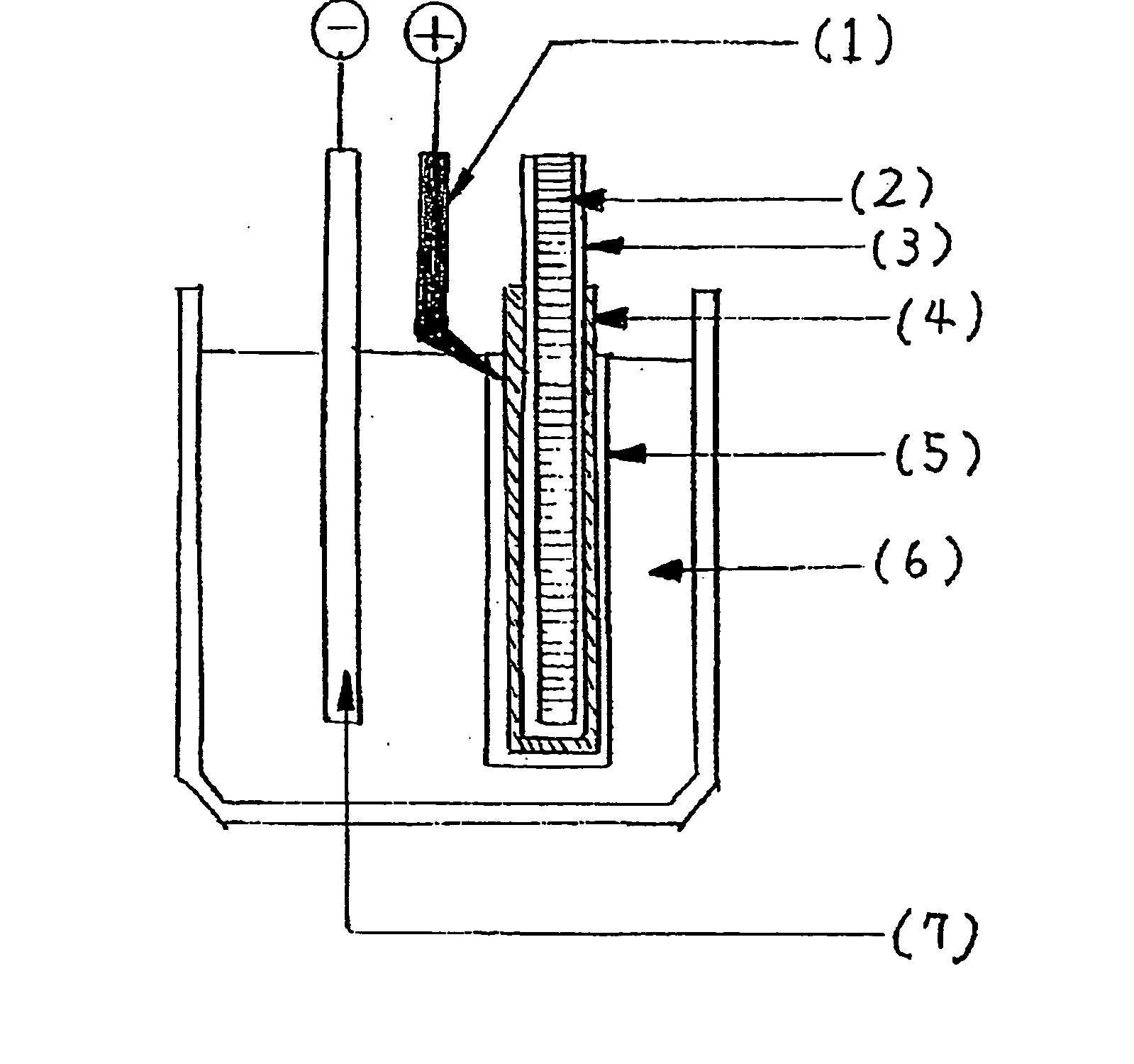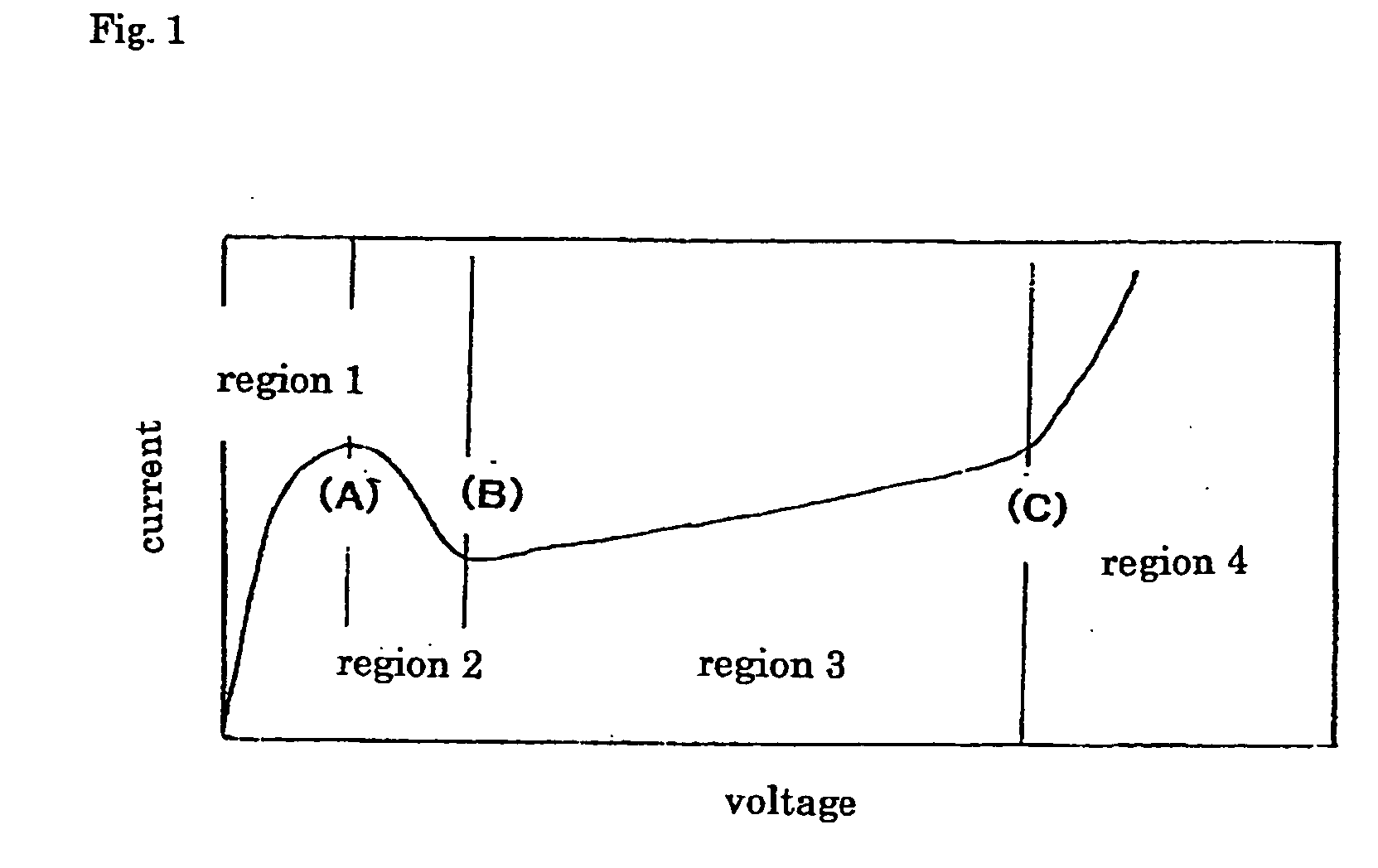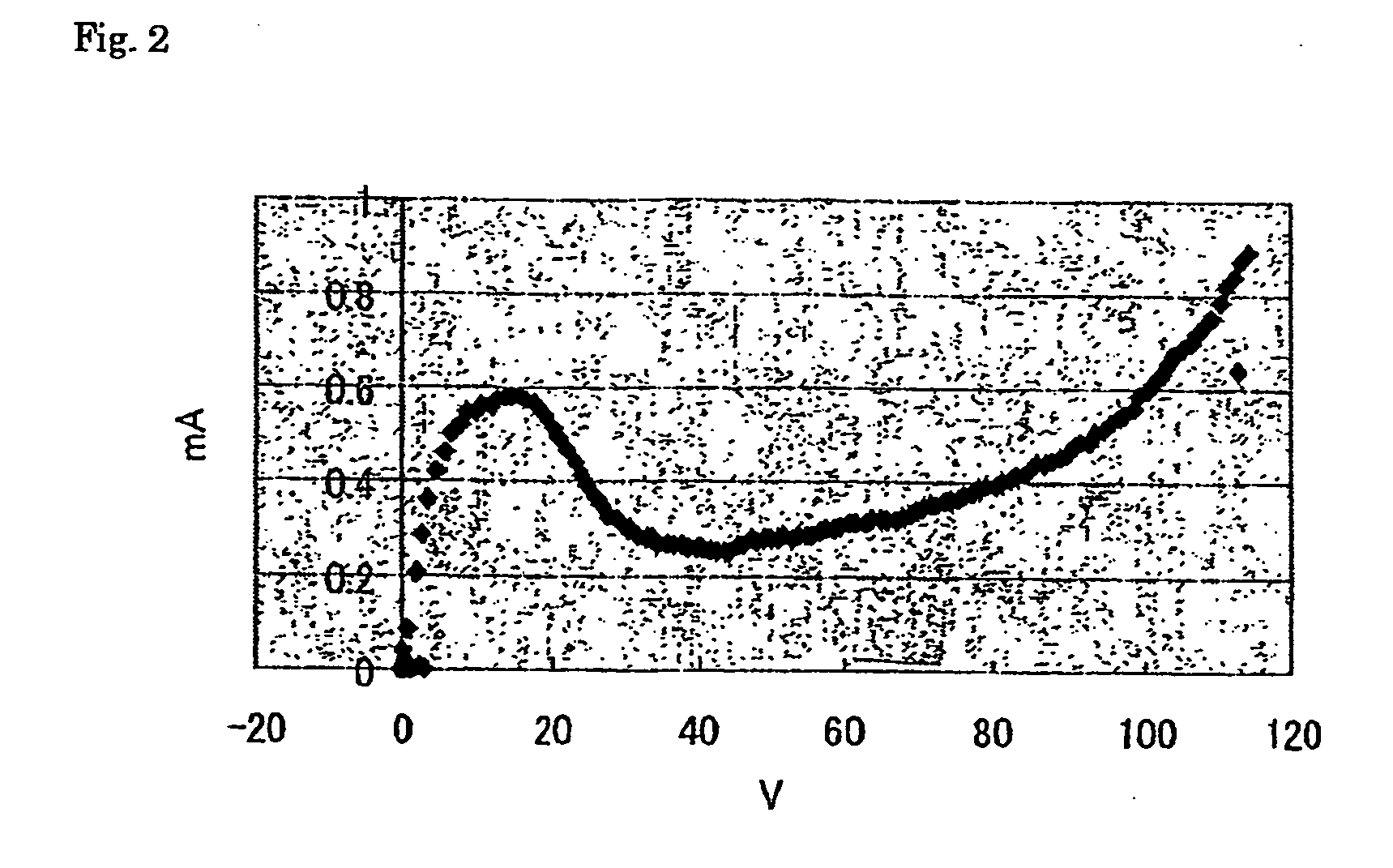Method for forming oxide film on metal surface using ionic liquid, electrolytic capacitor and electrolyte thereof
a technology of ionic liquid and metal surface, which is applied in the direction of liquid electrolytic capacitors, casings/cabinets/drawers, casings/cabinets/drawers details, etc., can solve the problems of loss of both anodizing property and conductivity, dry-up phenomenon, etc., and achieve excellent electron conductivity of conductive polymers, excellent metal oxidizing ability, excellent effect of forming and repairing
- Summary
- Abstract
- Description
- Claims
- Application Information
AI Technical Summary
Benefits of technology
Problems solved by technology
Method used
Image
Examples
example 1
[0123] An aluminum wire (1.5 mm in diameter) with a purity of 99.99% was dipped in a mixture containing 70% HNO3 (15 parts) and 85% H3PO4 (85 parts) for 2 minutes, and then washed with pure water. Next, the wire was etched with a 1N NaOH solution for 10 minutes, washed with pure water, dipped in acetone, and then dried.
[0124] Next, the aluminum wire was subjected to formation treatment in an aqueous solution (1 g / L) of adipic acid. The formation treatment was performed with a constant current of 10 mA / cm2, and after the voltage reached 200 V, the wire was maintained at a constant voltage of 200 V for 10 minutes. After the formation, the formed film was treated with boiling water for 3 minutes with 100 V and a DC current applied so that the Al (aluminum) side was a positive pole. The formed film was partially broken by the treatment.
[0125] The formed film treated as described above was immersed in an ionic liquid, and changes in the current value with increases in the voltage at a ...
examples 2 to 12
[0130] The same experiment as in Example 1 was carried out using each of the ILS-2 to ILS-12. The results of the experiments are shown in Table 1. In the table, a blank (marked with “−”) indicates that a definite voltage value was not observed.
TABLE 1Evaluation of anodizing ability (re-formationexperiment): influence of type of ionic liquidExperimentNo.Ionic liquidPoint A (V)Point B (V)Point C (V)Example 1ILS-1154080-100Example 2ILS-21540-50120Example 3ILS-31540-50120Example 4ILS-41540-50100Example 5ILS-51030-4080Example 6ILS-6—40-5090Example 7ILS-7—50-70170Example 8ILS-81540-90160Example 9ILS-92050≧200Example 10ILS-103050-70≧200Example 11ILS-113050≧200Example 12ILS-123070180Comparative45120 180Example 1ComparativeILS-24——— (20 or less)Example 2ComparativeILS-25——— (20 or less)Example 3
[0131] Table 1 shows the voltages of the points A, B, and C. In the table, a blank (marked with “−”) indicates that a definite voltage value was not observed.
[0132] In the table, each of the ILS-2 ...
examples 13 to 22
[0134] The same experiment as in Example 1 was carried out except that the first formation voltage was 50 V or 100 V. The results are shown in Table 2. In the table, a blank (marked with “−”) indicates that a definite voltage value was not observed.
TABLE 2Evaluation of anodizing ability (re-formationexperiment): influence of formation voltageIonicFormationPoint APoint BPoint Cliquidvoltage (V)(V)(V)(V)Example 13ILS-250152060Example 14ILS-2100153085Example 15ILS-350152055Example 16ILS-3100152580Example 17ILS-750—5080Example 18ILS-7100—60140-150Example 19ILS-85015—160Example 20ILS-810015—180-200Example 21ILS-10502040-120160Example 22ILS-101002040-120200
[0135] The results show that in 50-V formation, the ILSs (ILS-2 and ILS-3) each containing an atomic group anion including a sulfonic acid anion (—SO3−) have breakdown voltages of 55 to 60 V (point C), and the fluorine anion-containing ILSs (ILS-7, ILS-8, and ILS-10) have breakdown voltages of 120 V to 160 V. The ILS-7 contains a fluo...
PUM
| Property | Measurement | Unit |
|---|---|---|
| conductivity | aaaaa | aaaaa |
| formation voltage | aaaaa | aaaaa |
| formation voltage | aaaaa | aaaaa |
Abstract
Description
Claims
Application Information
 Login to View More
Login to View More - R&D
- Intellectual Property
- Life Sciences
- Materials
- Tech Scout
- Unparalleled Data Quality
- Higher Quality Content
- 60% Fewer Hallucinations
Browse by: Latest US Patents, China's latest patents, Technical Efficacy Thesaurus, Application Domain, Technology Topic, Popular Technical Reports.
© 2025 PatSnap. All rights reserved.Legal|Privacy policy|Modern Slavery Act Transparency Statement|Sitemap|About US| Contact US: help@patsnap.com



